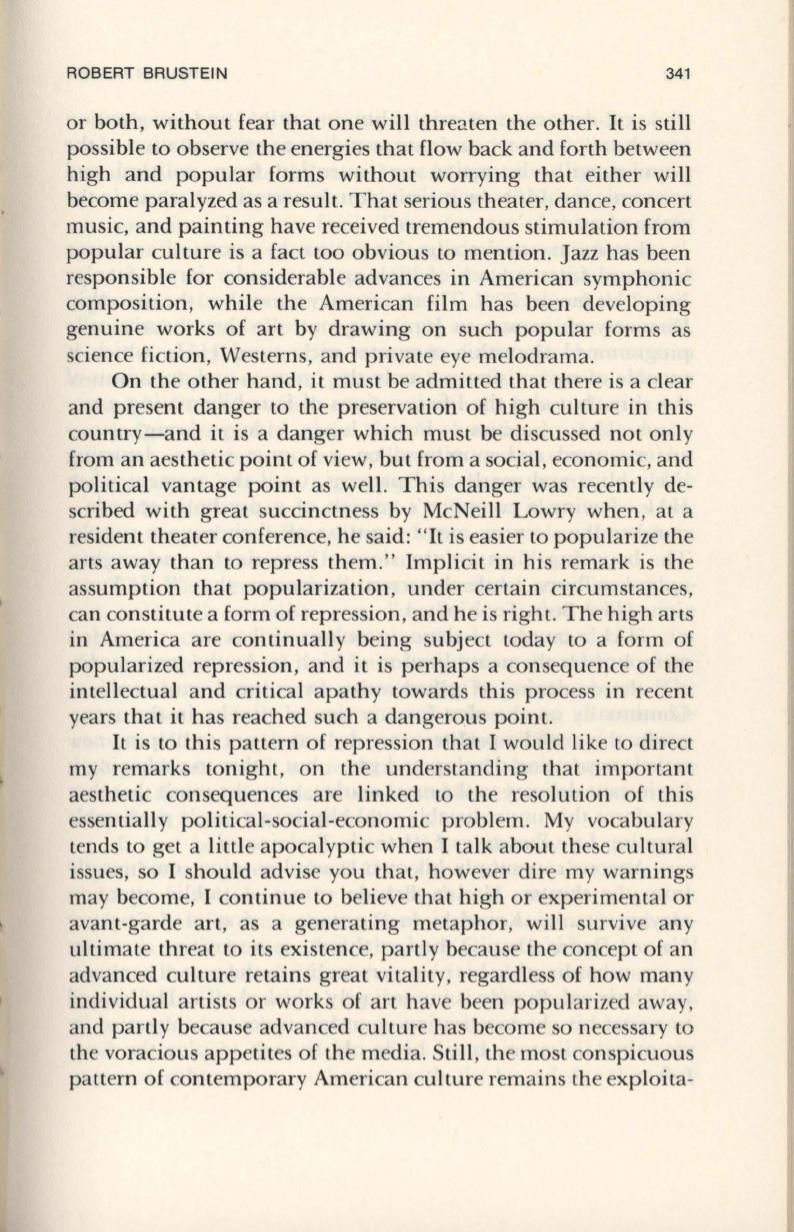
ROBERT BRUSTEIN
341
or both, without fear that one will threaten the other.
It
is still
possible to observe the energies that flow back and forth between
high and popular forms without worrying that either will
become paralyzed as a result. That serious theater, dance, concert
music, and painting have received tremendous stimulation from
popular culture is a fact too obvious to mention. Jazz has been
responsible for considerable advances in American symphonic
composition, while the American film has been developing
genuine works of art by drawing on such popular forms as
science fiction, Westerns, and private eye melodrama.
On the other hand, it must be admitted that there is a clear
and present danger to the preservation of high culture in this
country-and it is a danger which must be discussed not only
from an aesthetic point of view, but from a social, economic, and
political vantage point as well. This danger was recently de–
scribed with great succinctness by McNeill Lowry when, at a
resident theater conference, he said:
"It
is easier to popularize the
arts away than to repress them." Implicit in his remark is the
assumption that popularization, under certain circumstances,
can constitute a form of repression, and he is right. The high arts
in America are continually being subject today to a form of
popularized repression, and it is perhaps a consequence of the
intellectual and critical apathy towards this process in recent
years that it has reached such a dangerous point.
It
is to this pattern of repression that I would like to direct
my remarks tonight, on the understanding that important
aesthetic consequences are linked to the resolution of this
essentially political-social-economic problem. My vocabulary
tends to get a little apocalyptic when I talk about these cultural
issues, so I should advise you that, however dire my warnings
may become, I continue to believe that high or experimental or
avant-garde art, as a generating metaphor, will survive any
ultimate threat to its existence, partly because the concept of an
advanced culture retains great vitality, regardless of how many
individual artists or works of art have been popularized away,
and partly because advanced culture has become so necessary to
the voracious appetites of the media. Still, the most conspicuous
pattern of contemporary American culture remains the exploita-


